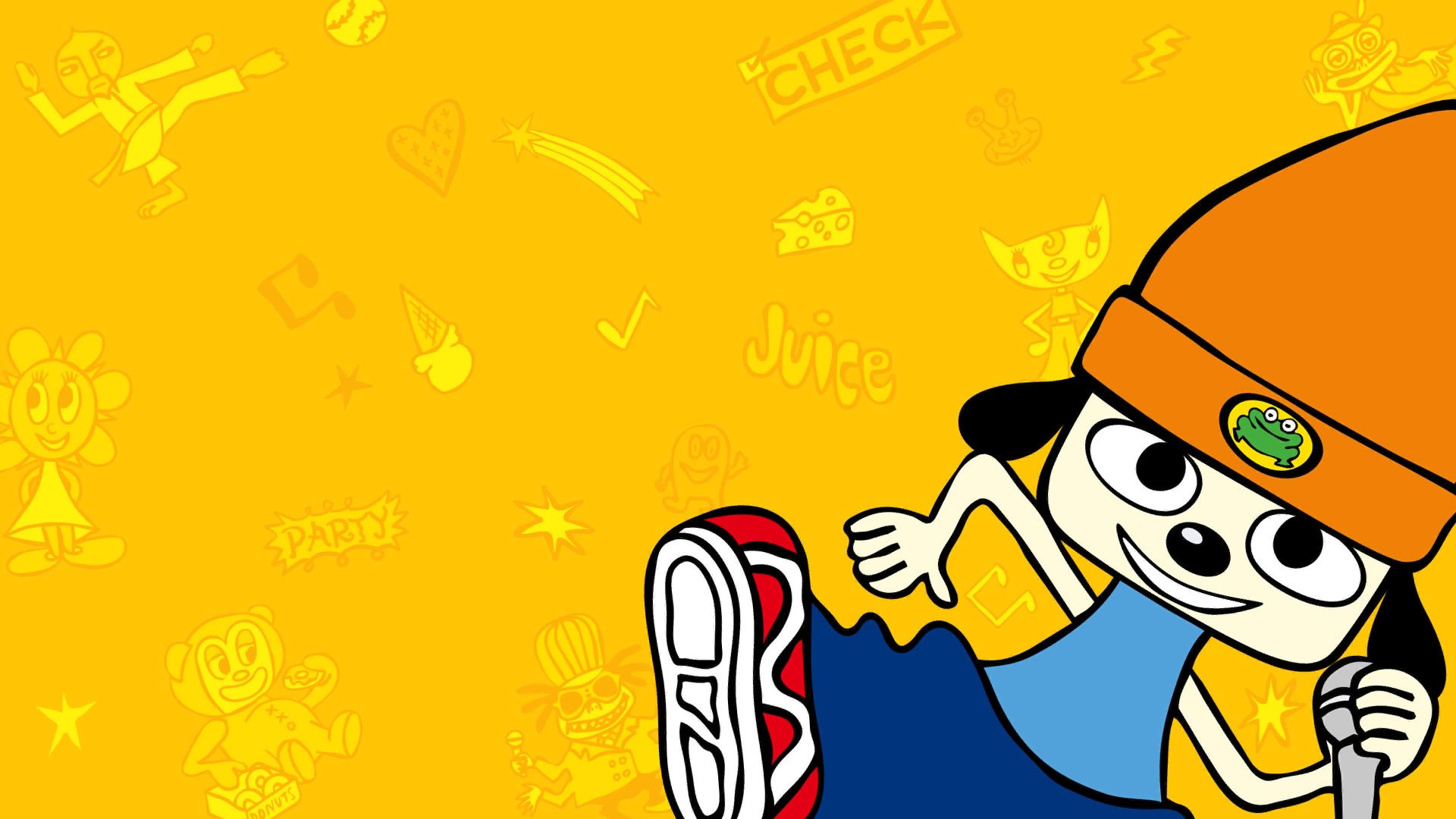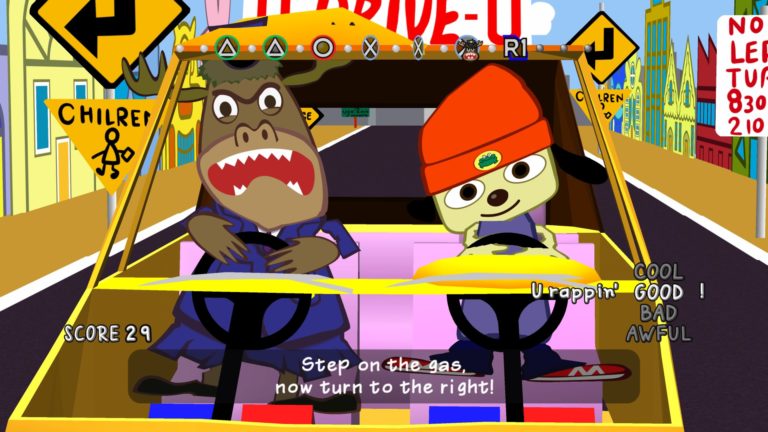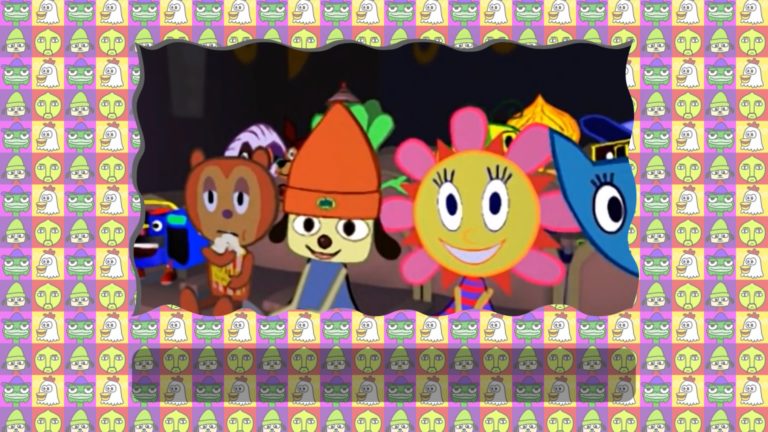Of all the games that came to define the power of the PlayStation early on in its life, no game spoke more clearly to me of the potential brought forth by the next generation of consoles than Parappa the Rapper.
Before you look at me like I’m mad, hear me out. Citing Crash Bandicoot and Naughty Dog’s splendid use of the hardware is the obvious, default choice in most PSX fans, at with good reason. At the time however, 3D visuals were still in their infancy, and fighting an uphill battle against 2D visuals as they were reaching their peak. While Crash looked cool in that new-gen way that occasionally doesn’t age well (see Final Fantasy VII), Parappa’s developer NanaOn-Sha were after something different.
Not only did NanaOn-Sha cleverly pre-date Parappa’s look by using 2D sprites as the basis for the characters, but in a twist, they were placed against 3D environments for one of the most unique visual styles in gaming. As if someone had driven a steamroller through a Sanrio factory, Parappa’s world was somehow three dimensional, but overpopulated with flat characters. The very first time the camera swivels around Parappa, making him disappear for just a split second, it was obvious from just the opening title that they had created something special.
It wasn’t just innovative graphics that impressed upon me the potential of Sony’s new console at the time, however. No, that honor is reserved for the music.
Hip-Hop Saved My Life
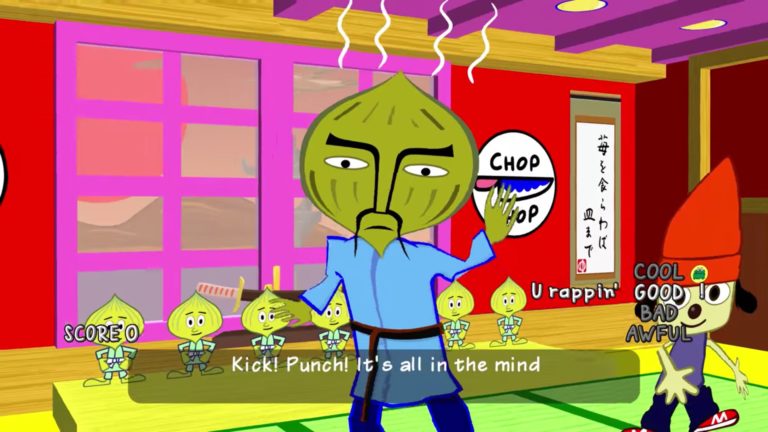
Step Into a World
If you’ve never experienced the original game, but heard of its sequels, this may sound just a bit familiar. An unlikely hero with a heart of gold using music to achieve their goals? UmJammer Lammy and Parappa the Rapper 2 used this exact story template for other games in the franchise, but like any repeatedly used trope, the devil’s in the details, and here, we’re looking at the one that started it all. Parappa’s story plays out like a surreal, high energy version of a John Hughes movie turned musical, and it’s just as fun to watch as it is to play out. With an indomitable motto like “I’ve gotta believe”, how can you NOT want to see him succeed in the end?
Simon Says
Completely unlike anything else at the time, the gameplay is where Parappa distinguishes itself, setting the stage for all the games that would follow in this new genre. Put simply, each “lesson” is set up like a call-and-answer rap song, with the teachers leading in, and Parappa following suit. The lyrics are represented by a sequence of buttons that need to be pressed in time. If you get the lines right, you get a rating (Measured from Cool to Awful) and the song continues on.
If you begin missing buttons, or play off beat, leaning more towards the Awful side, Parappa fumbles his lines, and the song sounds progressively worse–until the teacher just gives up and cuts the track. In short, buttons equal words, and your timing affects the delivery. It’s a fun, easy to understand mechanic that inspires creativity as you get used to the music and eventually, begin going off script in order to nab one of those elusive Cool ratings. I won’t spoil what happens when you do, but rest assured, the results are often funnier and more off-the-wall than the original way the songs play out.
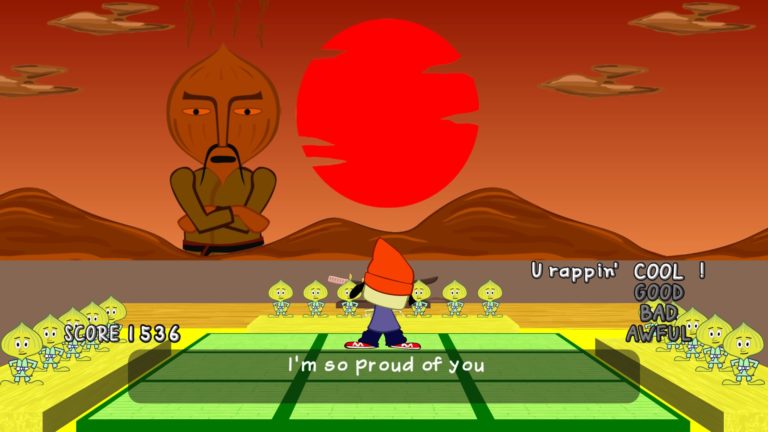
If you can’t already tell from the screenshots, Parappa has aged very well. In fact, if the presentation of the original has any flaws at all, they only exist because our televisions have gotten that much better since 1996, and the game was what we now refer to as “low resolution”.
Going from 240i to 2160p (Yes, I really looked it up), Parappa and co. are the best looking they possibly can be, and things could not be more vibrant as a result. Parappa was always a game that managed to transcend any technical limitations thanks to artist Rodney Greenblatt’s art direction, and what used to look rough on a CRT television is now as sharp as it might have looked on the easel they were originally drawn on.
As a bonus, because of the resolution bump, 3D elements no longer stick out like a sore thumb. It’s not a complete overhaul, but when your only flaw is being “low res”, the coat of paint applied is a more than welcome upgrade. In fact, the game is often so good looking in this revitalized state that it actually makes the cutscenes look bad, a subtle case of role reversal that shows why we rarely use them anymore.
Chicken Noodle Soup
Unfortunately, despite all this praise, the problem I’m so reluctant to address lies in a feature that almost certainly should’ve been paid closer attention to–the odd hiccups in some of Parappa’s lines. While the game plays almost exactly as I remember it, the timing at times can be extremely odd, and even off-beat in a way that will contradict your instincts. To give you some context, I’ve been playing this game and its sequels since as early as 1998, and as such, have many of the game’s songs, lyrics, and patterns irrevocably burned into my brain. So when I tell you I can play the original on mute, or in such a way that makes Parappa’s lines near-seamless, you can understand the level of obsessive perfection I achieved in this game while being a kid with no responsibilities.
This is to say, I’m enough of a fan to tell you that Parappa has always had a slight delay you have to work around when matching phrases, and it’s something NanaOn-Sha eliminated in later games to make things more intuitive. Unfortunately, in spite of the retroactive improvements made to the display for newer players, the game’s built-in delay not only still exists, but seems worse than the original in a few spots, most noticeably in the fourth stage.
While I made my way through the first three stages with little difficulty, as soon as I reached the Cheap Cheap cooking stage, things went south. I felt on beat, Parappa’s voice didn’t indicate otherwise, but no matter what I did, I ended up failing out of the song repeatedly until, utterly defeated, and completely out of options, I played the song off-beat by a half-second, then watched incredulously as I won.
It made about as much sense as a hen using her unborn children to bake a cake, and I’m sure there will be comments about how I was wrong and the game is actually right, but this moment served to pull me out of the experience for a good 15 minutes. The game is relentlessly charming (even while telling you that you suck), and that’s something that makes repeated failure land just shy of controller-throwing annoyance.
Feelin’ Myself
As far as content, you get exactly what the title suggests: Parappa the Rapper Remastered. It’s the original game with very few extras included in the package, and is structurally no different than the Playstation original. The game is still six stages and roughly a half hour long, and while helpful “Feel/See the Beat” options were added to make the game just a tad more intuitive, the lack of any extras beyond a few goofy alternate backing tracks doesn’t make for a terribly long experience.
Getting a “Cool” rating on every stage will add an extra few hours, but when the game is over, it’s pretty much shown you all it has to offer. It’s undeniable charm, and infectious lyrics may keep you coming back, though your personal mileage may vary. I cleared it 4 times just to review it here, and I can’t even begin to count the number of times I replayed the original.
At USD $14.99, roughly a third of its original price, it’s practically a steal for the experience of reliving a literal part of gaming history, perfectly restored. For better or worse, Parappa is the same game it was 20 years ago. When you can play an older game after that much time has passed, and have the same experience you did years prior, that is exactly what a remaster is supposed to accomplish.

